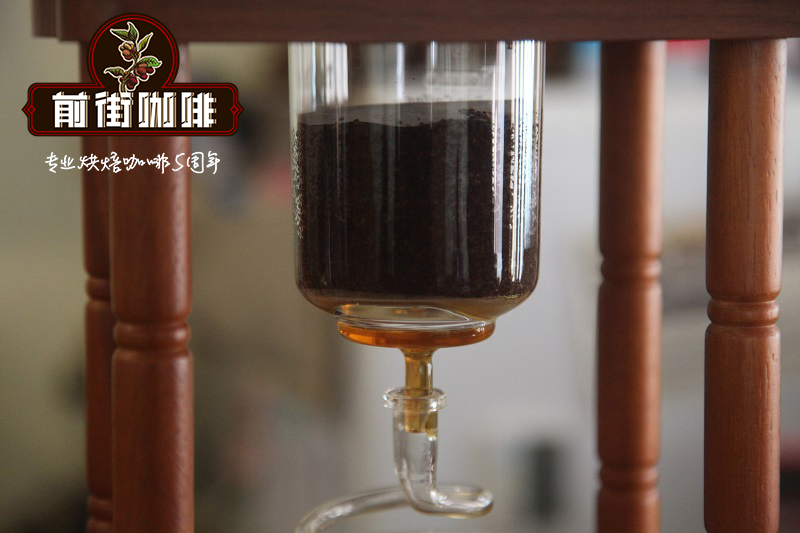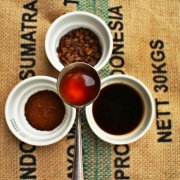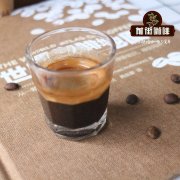How to make Indonesian toraja Coffee, how to make toraja coffee, how to drink Indonesian National Treasure toraja?

Professional coffee knowledge exchange more coffee bean information please follow the coffee workshop (Wechat official account cafe_style)
Indonesia is made up of more than 17,000 islands scattered over the equatorial volcanic belt and has fertile soil. Famous producing areas include Sumatra in the west, Sulawesi in the middle, and Java in the south. Coffee was brought to Jakarta by the governor of the Netherlands from Malabar, India, in 1696, and local farmers were forced to grow coffee instead of white rice. Since 1850, the Dutch East India Company has expanded its planting area to other Indonesian islands. By far, Indonesia is the fourth largest coffee exporter in the world.
The rust that ravaged Indonesia in 1876 nearly wiped out Arabica coffee. Since then, farmers have begun to plant Robusta with high disease resistance in the hardest-hit areas of the East Java lowlands. After the independence of the country, local talents replanted the higher quality Arabica (Arabica). So far, 80% of Indonesia's exports are still commercial-grade Robasta. Interestingly, since the eastern islands of Timor and Flores were Portuguese dependencies at that time, the species were different from those of the Netherlands and had a lesser impact. You can still drink "ancient species" from the 16th century.
Production area: Sapan-Minanga, Toraja, Sulawesi, Indonesia
Planting altitude: 1300-2000 m
Raw bean variety: Djember (SMUE 795)
Raw bean treatment: Wet-Hulled (local traditional wet peeling method)
As far back as the end of the 17th century, when the Dutch East India Company transplanted the first Arabica coffee tree from India to Indonesia, it began the history of coffee cultivation in this land. Indonesia is currently one of the five largest coffee exporters in the world. It was once the largest coffee producer in Asia until it was overtaken by Vietnam in 1999.
Coffee cultivation in this land was not plain sailing. The outbreak of leaf rust at the end of the 19th century brought great disaster to coffee cultivation in Indonesia, and the original Arabica species withered out. Finally, after the Dutch began to promote the coffee trees planted by Robusta, coffee cultivation in Indonesia was stabilized again.
Today, robusta coffee still accounts for the vast majority of coffee produced in Indonesia, while Arabica coffee accounts for only about 10%. This Indonesian coffee, which accounts for only a small amount of Arabica, includes Java, Manning, which are familiar to you, and Toraja, which we will introduce today.
Toraja from the Indonesian island of Sulawesi, named after the plateau where the producing area is located, is about 1500 meters above sea level and the mountain is steep, and the soil is volcanic soil, a variety of factors create this very suitable environment for coffee growth.
There is another famous coffee bean on the island of Sulawesi, the shockingly expensive civet coffee, which is also a brother of Toraja.
The appearance of raw beans is very similar to that of Manning, with a dark green appearance. This is because local farmers refine the coffee cherries with the traditional wet peeling technology Giling Basah (Wet-Hulled) after harvest and remove the peel before the beans are dried.
In this way, the acidity of coffee beans will be greatly reduced, will also be thicker in terms of taste, and retain rich fruit tonality.
This treatment is risky, and if not replenished during peeling, it may ferment the coffee into a very undesirable flavor. And if there is a sudden rain while it is dry in the courtyard, it will also make the coffee have an obvious musty smell.
Although this kind of treatment is richer in taste, it must also be taken care of more carefully in the process of handling.
After grinding, the dry aroma is already rich in fruit acid, smelling like a comprehensive fruit juice.
The extraction is done by hand. At the water temperature of 85 ℃, the water is cut off after steaming, and the aroma of fruit is still coming out continuously in the process of cooking.
Toraja and other Indonesian coffee is unique in flavor, not like ordinary Indonesian beans, but closer to the taste of African beans.
After the palate, the taste is mild sweet and sour, a little similar to the large amount of sweetness of grapes, longan or lotus mist with a slight sour taste. The coffee itself tastes very thick, which retains the tonality of the Asian bean itself.
As for the sweetness of Huigan at the end, it is a mixture of chocolate and caramel, which is very fascinating!
Place of Origin
Toraja is produced in the TORAJA Plateau in the middle of the Indonesian island of Sulawesi.
The old name of Sulawesi Island is Celebes Island.
Kalossi is a major local coffee distribution town.
Therefore, these names often appear with Toraja Coffee!
Incidentally, there is a legendary people living in the TORAJA Plateau.
Interested viewers can take a look at this travel note: Toraja, South Sulawesi, Indonesia
Toraja coffee is grown on rugged slopes over 1200 meters above sea level.
The yield is small, and the average annual yield per hectare is only 300KG.
About 1 / 3 of the capacity in Central and South America.
Most of the local families are small farmers or families in the form of cooperatives.
A book on coffee by Mr. Han Huaizong
Referring to the three major estates in toraja, they are:
Pt kapalapi 、 CSR
And Toarco Jaya operated by KEY
Some cafes in Taiwan regard Kalossi as the name of the manor. I don't know if it is misunderstood.
Toraja coffee belongs to Typica tree species.
Compared with Golden Manning, it has brighter acidity, rich caramel aroma and more obvious layering.
The regional flavor such as soil sunken wood is more convergent than that of Mantenin.
Slightly floral, but not as thick as Manning.
Qianjie coffee: Guangzhou bakery, the store is small but a variety of beans, you can find a variety of unknown beans, but also provide online store services. Https://shop104210103.taobao.com
Important Notice :
前街咖啡 FrontStreet Coffee has moved to new addredd:
FrontStreet Coffee Address: 315,Donghua East Road,GuangZhou
Tel:020 38364473
- Prev

Characteristics of Fine Coffee Bean Tonaga Toraja Coffee planting in Indonesia
Professional coffee knowledge exchange more coffee bean information please pay attention to the coffee workshop (Wechat official account cafe_style) Indonesia: Indonesia's southwest Sulawi (South Sulawesi) Tana Toraja Mountain area, 1700 meters above sea level, is an alpine volcanic terrain, adequate sun, large temperature difference between day and night, the room temperature is maintained at 24 ℃ ~ 25 ℃. Because of its fertile tropical height
- Next

Introduction to the Flavor characteristics of the Historical Story of the planting situation of Coffee beans in Bali Bali, Indonesia
For more information about coffee beans, please follow the Coffee Workshop (official Wechat account cafe_style) Indonesia is made up of more than 17, 000 islands scattered over the equatorial volcanic belt and has fertile soil. Famous producing areas include Sumatra in the west, Sulawesi in the middle, and Java in the south. Coffee was made by the Governor of the Netherlands from Ma in India in 1696.
Related
- Does Rose Summer choose Blue, Green or Red? Detailed explanation of Rose Summer Coffee plots and Classification in Panamanian Jade Manor
- What is the difference between the origin, producing area, processing plant, cooperative and manor of coffee beans?
- How fine does the espresso powder fit? how to grind the espresso?
- Sca coffee roasting degree color card coffee roasting degree 8 roasting color values what do you mean?
- The practice of lattes: how to make lattes at home
- Introduction to Indonesian Fine Coffee beans-- Java Coffee producing area of Indonesian Arabica Coffee
- How much will the flavor of light and medium roasted rose summer be expressed? What baking level is rose summer suitable for?
- Introduction to the characteristics of washing, sun-drying or wet-planing coffee commonly used in Mantenin, Indonesia
- Price characteristics of Arabica Coffee Bean Starbucks introduction to Manning Coffee Bean Taste producing area Variety Manor
- What is the authentic Yega flavor? What are the flavor characteristics of the really excellent Yejasuffi coffee beans?

